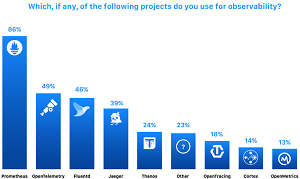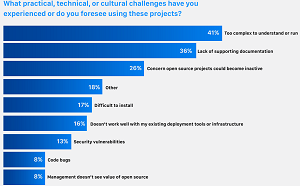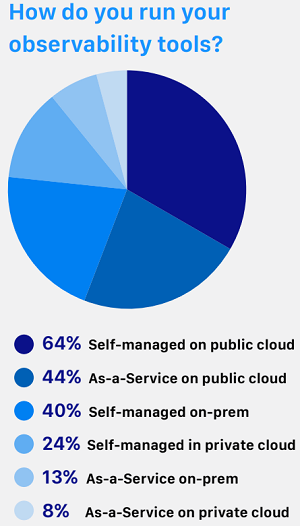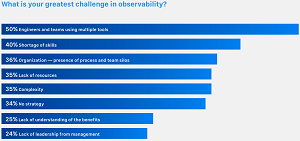News
CNCF Finds Prometheus Top Cloud Observability Choice
The Cloud Native Computing Foundation (CNCF) conducted a cloud native observability survey that found its own projects accounted for the top three most popular offerings, starting off with Prometheus.
The CNCF actually called it a microsurvey, as it collected 186 responses toward the end of last year in attempt to find out how organizations use observability tools.
"The desire to achieve the expected benefits of cloud has seen growing interest in a concept known as observability," the CNCF said in a March 8 blog post announcing the report. "This is a way to determine the health of an application, workload, or system so you can act to secure and maintain performance and availability. Observability constructed on cloud native principles, architectures, and technologies, is the best route to ensuring performance and availability."
Starting off with the most-used observability tools, the survey found that three of its own projects were leading the way in adoption, with the report stating:
- Prometheus is the most used project, adopted by 86 percent of respondents and their organizations for event monitoring and alerting.
- OpenTelemetry, a set of tools, APIs, and SDKs to instrument, generate, collect and export data to analyze the performance and behavior of cloud native software and systems, is used by 49 percent.
- Fluentd, which delivers a unified logging layer, [is] used by 46 percent.
 [Click on image for larger view.] Products Used for Observability (source: CNCF).
[Click on image for larger view.] Products Used for Observability (source: CNCF).
Prometheus describes itself as an open source monitoring solution, counting observability as only one of its functions, although Grafana Labs published a webinar on that functionality titled "Intro to Observability with Prometheus and beyond."
Here are some other highlights of the report:
-
Observability challenges: We asked participants what practical, technical, or cultural challenges they had experienced, or that they foresee experiencing, in using the cloud native observability projects. The most common challenge experienced or expected was complexity, or being too difficult to understand or run (41 percent).
 [Click on image for larger view.] Practical, Technical or Cultural Challenges (source: CNCF).
[Click on image for larger view.] Practical, Technical or Cultural Challenges (source: CNCF).
-
How are observability tools deployed? There's a vast array of observability tools, but how are they deployed? The overwhelming majority (64 percent) are self-managed on the public cloud. Observability as a service on the public cloud was employed by 44 percent, while 40 percent ran self-managed on-prem.
 [Click on image for larger view.] How Tools Are Deployed (source: CNCF).
[Click on image for larger view.] How Tools Are Deployed (source: CNCF).
-
Greatest challenge: The biggest challenge for half of the participants was the sheer number of tools employed by engineering teams. Most teams are using up to 15 projects. The difficulty arises when these tools lack integration and interoperability or provide a view of only certain parts of the technology stack. This perpetuates data, process, and team silos that make it difficult to develop the picture needed for a complete understanding of a systems' health. Silos around teams and processes were rated as an organizational challenge by 36 percent.
 [Click on image for larger view.] Organizational Challenges (source: CNCF).
[Click on image for larger view.] Organizational Challenges (source: CNCF).
Going forward, when asked about top observability priorities for the next year, 60 percent of respondents answered with "Develop best practices," followed by: "Provide engineers with tools and data to identify, preempt, respond to and triage issues" (56 percent); and "Establish a single, unified view of the technology stack/platform" (53 percent.)
About the Author
David Ramel is an editor and writer at Converge 360.